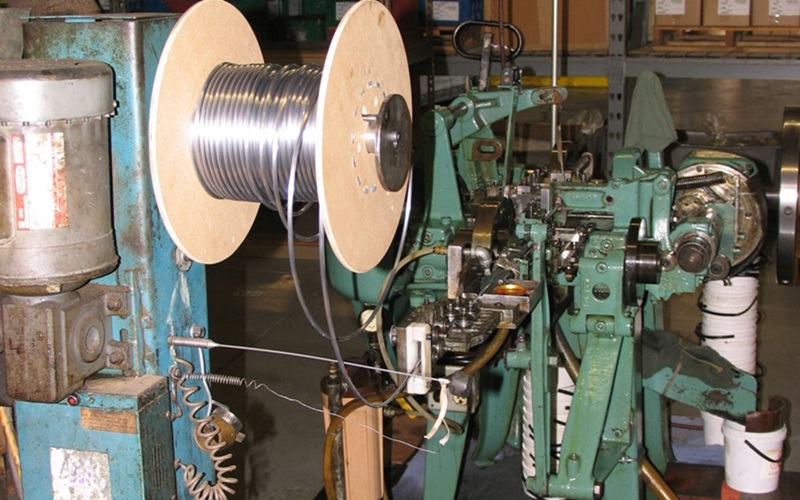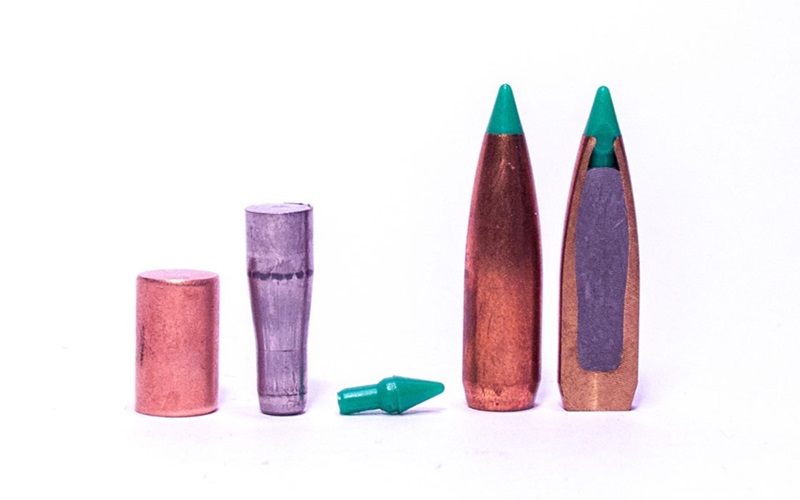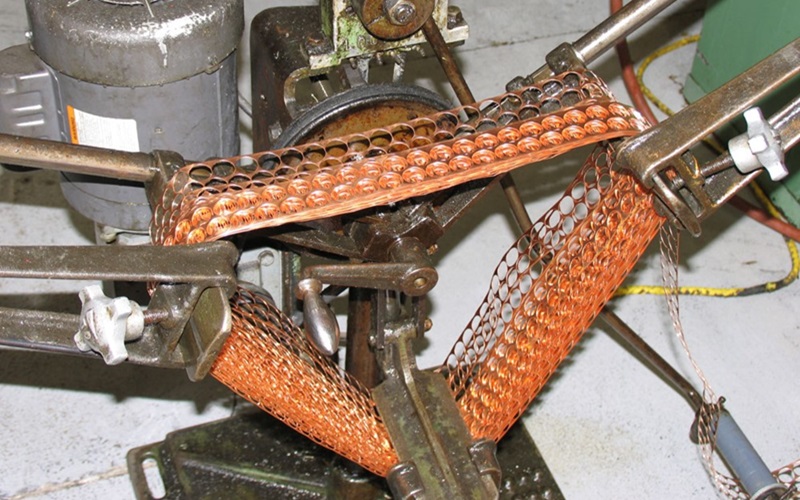The blend of lead, copper, alloys and plastic determine how a bullets flies and functions
The modern small arms bullet is a marvelous creation. Shooters tend to take them for granted and often know very little about them.
For example, did you know a full metal jacket (FMJ) bullet is just a bullet with a lead core surrounded by a copper jacket?
Most shooters only care that the bullets they shoot fly with precision.
Hunters and those using guns for self-defense want precision too, but they also want a bullet that will deliver effective wounding.
On-target precision and terminal performance are partly controlled by what bullets are made of, and what you might find interesting is that even though the construction of bullets varies, there are only a handful of materials used to make them.


Lead
Lead was the original bullet material and it is the most common. Early bullets were mono-metal bullets that were made entirely of pure lead.
But pure lead is soft, malleable, and has a low melting point. Today, bullets made only of pure lead are mostly used in low velocity handgun cartridges; they’re very popular with cowboy action shooters.
Over time, bullet manufacturers began to use lead alloys; they added tin and antimony to the lead to make it harder.
Even today with modern jacketed bullets, manufacturers adjust the hardness of the lead cores inside these jackets to control how these bullets react to impact and deformation.
Not all lead cores are created equal, some are harder than others.
Copper
In the world of metals, copper is also considered to be soft and malleable, but it is seven times harder than pure lead.
Copper is used to make bullet jackets to protect the lead, and it is even used to make mono-metal bullets.
As a bullet jacket, copper provides structural support for the lead. By varying jacket thickness, copper jacketed bullets can be made to withstand impact better.
As a mono-metal bullet material, the malleability of copper allows it to deform in a consistent manner when properly pre-stressed.
Barnes made the all-copper mono-metal bullet famous, and since all-copper bullets are lead free, some hunters consider them safer.
In some locations, lead-free bullets are mandated.


Gilding Metal
Just as there are lead alloys, there are copper alloys. Gilding metal is an alloy of copper and zinc.
When used as a bullet jacket, the ratio of copper to zinc is generally 95 percent to 5 percent.
Like copper, gilding metal is also a very common material for bullet jackets, but gilding metal is a bit harder than copper and is thought to leave less fouling in barrels.
Gilding metal is also used to manufacture mono-metal bullets. Hornady’s GMX bullet is an example of a lead-free, gilding metal bullet and it too can be used in locations where lead-free bullets are all that are allowed.
Brass
The use of alloys as bullet materials continues with brass, which is also a combination of copper and zinc.
The difference between brass and gilding metal is that a brass bullet can have as much as 33 percent zinc as opposed to the 5 percent zinc found in gilding metal.
This higher percentage of zinc makes brass much harder. Brass is sometimes used as a bullet jacket; the Remington Golden Saber bullet has a brass jacket that is of the same character and content as the brass used for cartridge cases.
But the most common use of brass in bullets is for solids that are used for dangerous game.
These are very hard, non-deforming bullets, but without their lead core they are lighter than jacketed solids so can be pushed faster.


Plastics
Plastics are the latest material used in the manufacture of bullets. It became a prominent bullet material in 1984 when Nosler introduced the Ballistic Tip bullet with its pointy plastic tip.
Since then, almost every major bullet manufacturer offers a similarly styled bullet. The sharp tip increases the bullet’s aerodynamics and, in some cases, helps with bullet upset on impact.
Hornady took the plastic tipped bullet to the next level with their Flex Tip bullet. This softer pointy tip allowed for more ballistically efficient bullets to be used in tube-fed lever action rifles.
Also, plastic or elastomer plugs are now being inserted in hollow point bullets to make them deform more consistently.
Particle Bullets
Here we’re not really talking about new bullet materials, but a way in which common bullet materials are used.
Particle or powdered metal bullets are made by using binders and compression to hold very minute copper particles together.
These bullets vary in construction, and in the way they react to impact. The lightweight non-jacketed ARX bullets, like those found in Inceptor ammunition, do not deform but allow for high velocities because of their light weight.
The jacketed compressed core bullets like those that are manufactured by DRT, essentially decompress on impact, and create wicked wound cavities.
